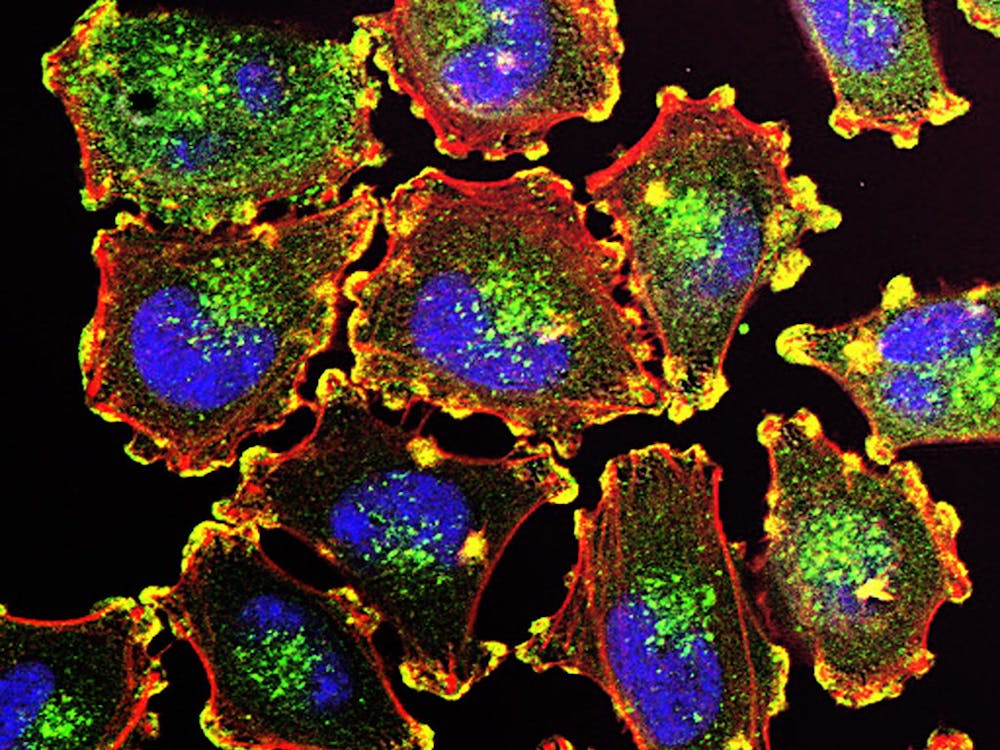Researchers at the Large Hadron Collider in Geneva, Switzerland have confirmed the existence of Z(4430). This particle, thought to be an elusive form of matter called a tetraquark, does not conform to any other known models of matter. This Z(4430) discovery came from the Large Hadron Collider beauty (LHCb) collaboration, a multinational research project led by researchers from Syracuse University.
Quarks, which were first discovered in the 1960s, are elementary particles found in the nuclei of atoms. They can combine in twos, forming units called mesons, or in threes, forming baryons. Both of these groupings can be found in nature: Mesons are known elements of cosmic rays and baryons include protons and neutrons.
For decades, researchers have hypothesized that quarks can combine in units of four. The resulting tetraquark remained a facet of theoretical physics, as no labs could prove the particle’s existence. In 2008, researchers working with the Belle detector at KEKB accelerator in Tsukuba, Japan reported the existence of Z(4430), a supposed tetraquark. However, this data didn’t hold up for long in the scientific world: Researchers working with the BaBar detector in the SLAC accelerator in Menlo Park, Calif. could not successfully repeat the Belle experiment. Thomas Cohen, a researcher at the University of Maryland, thinks modern computing is to blame for the lack of tetraquark evidence. Apparently, modern computing is not yet advanced enough to determine if a tetraquark could exist.
Despite these pitfalls, the LHCb collaboration collected an enormous amount of data to find the mysterious particle: The LHC team analyzed more than 25,000 decays of B mesons from 180 trillion proton-proton collisions using the analysis techniques of the Bell and BaBar researchers. 4000 Z(4430) particles were found in LHCb data. Although this seems to silence all doubts of the tetraquark’s existence, there are still questions surrounding the LHCb experiment.
Researchers working in the LHCb collaboration still need to prove Z(4430)’s tetraquark characteristics. According to Marek Karliner, a theorist at Tel Aviv University, other supposed tetraquarks may actually be loosely bound pairs of mesons. At the moment, the mass of Z(4430) appears to exclude it from this possibility.
Nonetheless, Z(4430) data reveals that the particle decays 10 times faster than predicted from tetraquark models. This suggests the researchers do not yet understand the whole quark story.






















Please note All comments are eligible for publication in The News-Letter.